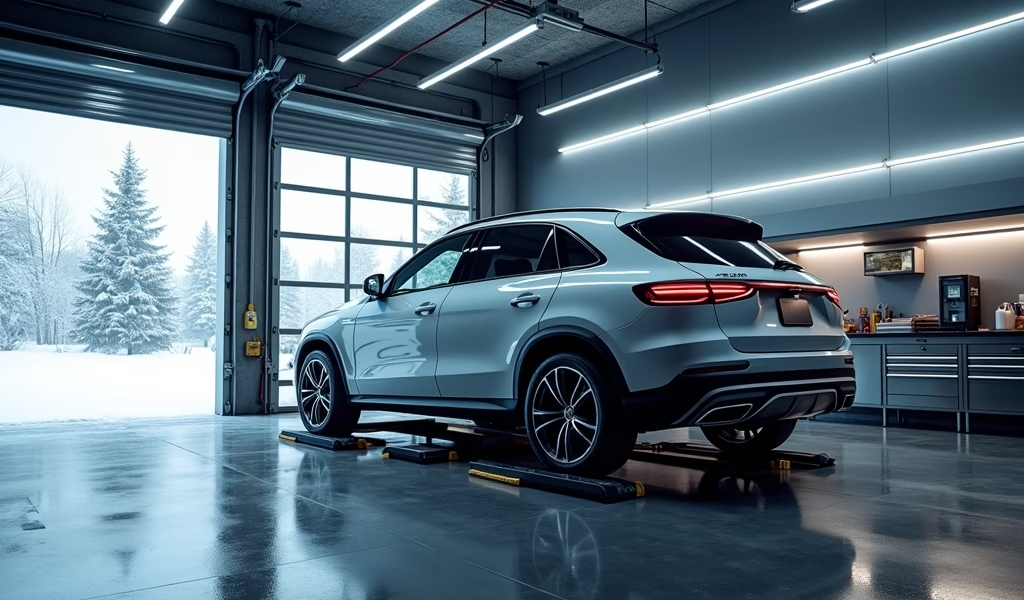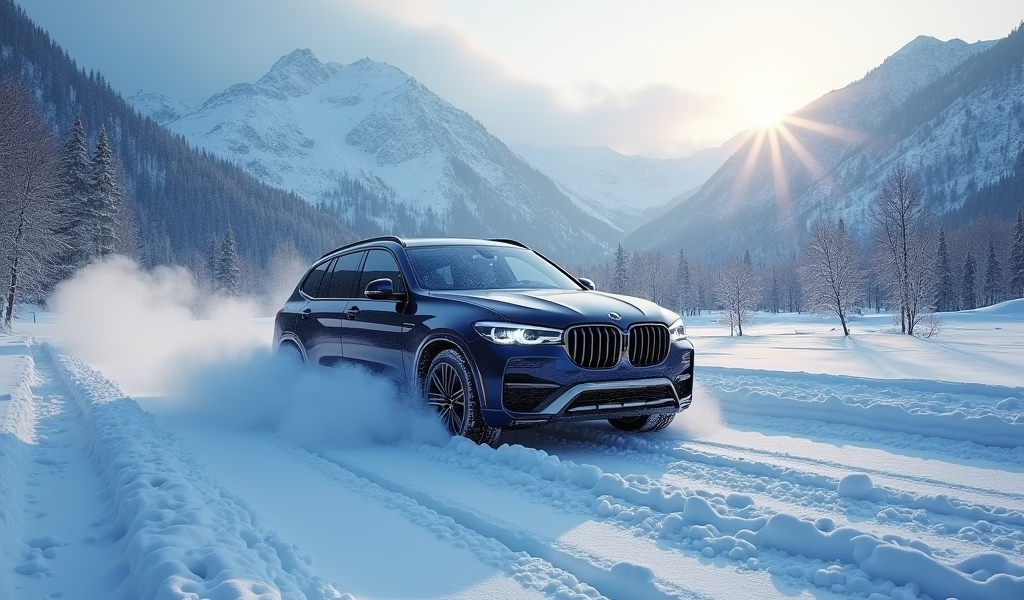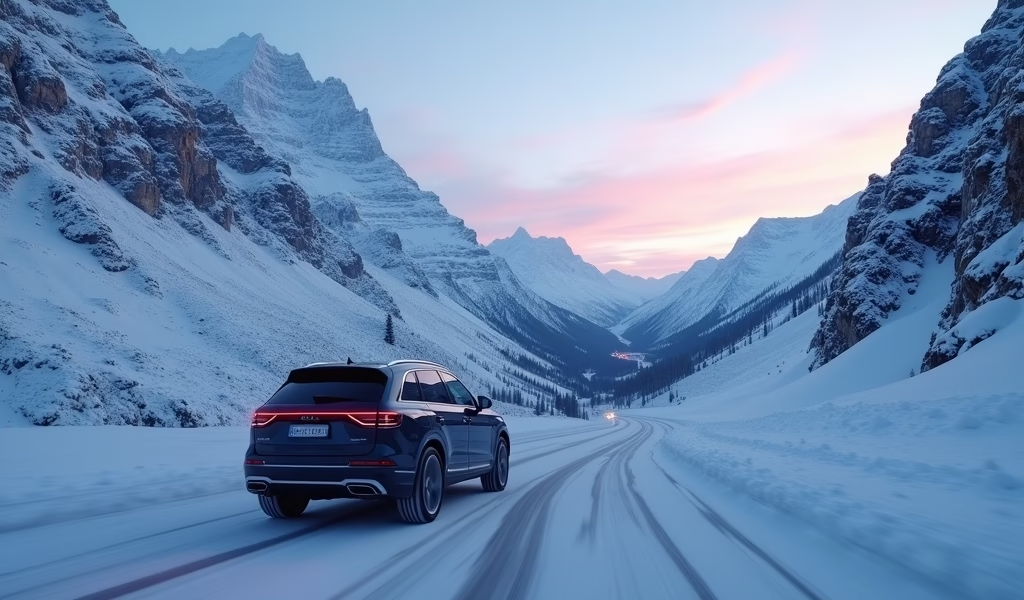Overview
The article identifies the seven best vehicles for snow driving (Subaru Outback, Jeep Grand Cherokee, Audi A4 Quattro, Toyota RAV4 Hybrid, Volvo V60 Cross Country, Ford Bronco Sport, and Mazda CX-5), highlighting their AWD/4WD systems, ground clearance, and traction control technologies. Beyond vehicle selection, it emphasizes that proper winter tires, regular maintenance, and appropriate driving techniques are equally crucial for safe winter driving.
Table of Contents
- Understanding What Makes a Car Great in Snow
- Essential Features to Look for in Snow-Ready Vehicles
- Top 7 Best Cars in the Snow
- Winter Preparation: Getting Your Vehicle Snow-Ready
- Snow Driving Techniques That Keep You Safe
- Winter Maintenance: Keeping Your Car in Top Shape
- Conclusion
- Frequently Asked Questions
Understanding What Makes a Car Great in Snow
Finding the best cars in the snow isn’t just about picking an SUV and calling it a day. As someone who’s spent 20 years under the hood and behind the wheel in some of the harshest winter conditions, I can tell you that snow performance depends on a specific combination of features, design elements, and technology.
When winter throws its worst at you – whether it’s unplowed streets, black ice, or heavy snowfall – your vehicle’s ability to maintain traction and stability becomes crucial. The difference between sliding into a ditch and safely navigating home often comes down to how well your car is engineered to handle these challenging conditions.
What truly makes a car excel in snow goes beyond just having four-wheel drive. It’s about weight distribution, ground clearance, tire compatibility, and intelligent traction control systems working in harmony. Some vehicles come from the factory ready to tackle winter roads, while others need a bit of preparation to perform their best.
Let’s break down what separates the true snow champions from the rest of the pack, and then explore the seven models that consistently outperform expectations when the temperature drops and the snow starts to fall.
Essential Features to Look for in Snow-Ready Vehicles
When evaluating the best cars in the snow, certain features stand head and shoulders above the rest. These aren’t just marketing gimmicks – they’re engineering solutions that make a genuine difference in winter conditions.
First and foremost, let’s talk about drivetrain options. All-wheel drive (AWD) and four-wheel drive (4WD) systems provide significant advantages by distributing power to all four wheels. AWD systems typically operate automatically, constantly adjusting power distribution between wheels, while traditional 4WD systems often require manual engagement but provide robust performance in deeper snow.
Ground clearance is your first defense against deep snow. Vehicles sitting higher off the ground (typically 8+ inches) can navigate through accumulated snow without getting hung up or packed with snow underneath. This is why crossovers and SUVs often perform better than sedans when the snow gets deep.
Modern electronic stability control systems make a world of difference. These intelligent systems can detect wheel slip and automatically adjust power delivery and braking to maintain control. Look for vehicles with specialized winter modes that optimize these systems specifically for snow and ice.
The right tires transform any vehicle’s winter performance. Even the most advanced AWD system is severely handicapped by all-season tires when temperatures drop below freezing. Dedicated winter tires with specially formulated rubber compounds and tread patterns are essential for true snow performance, as Consumer Reports testing consistently demonstrates.
Finally, consider weight distribution. Vehicles with balanced weight between front and rear axles typically provide more predictable handling in slippery conditions. Some rear-wheel-drive vehicles can actually perform surprisingly well with proper winter tires and added weight in the trunk to improve traction.

Top 7 Best Cars in the Snow
After years of testing vehicles in winter conditions and consulting with other mechanics and driving experts, I’ve compiled this list of the seven best cars in the snow. These vehicles consistently demonstrate superior winter performance right from the factory, though all will benefit from proper winter tires.
1. Subaru Outback
The Outback has earned its legendary winter reputation honestly. Its symmetrical all-wheel-drive system provides exceptional balance and predictable handling, while 8.7 inches of ground clearance keeps you moving through deeper snow. What really sets it apart is how the AWD system is always engaged and continuously optimizing power distribution between all four wheels.
The X-Mode feature, available on most trims, further enhances traction control calibration specifically for slippery conditions. Combined with its wagon design that balances weight distribution beautifully, the Outback delivers confidence-inspiring performance that makes winter driving almost enjoyable.
2. Jeep Grand Cherokee
For those needing serious snow capability, the Grand Cherokee’s available Quadra-Drive II 4WD system with electronic limited-slip differential is practically unstoppable. When equipped with the Quadra-Lift air suspension, you can raise the vehicle to provide up to 10.8 inches of ground clearance when needed.
The Selec-Terrain system lets you optimize vehicle systems specifically for snow conditions with the turn of a dial. While it’s larger than some options on this list, the Grand Cherokee’s sophisticated traction systems and substantial ground clearance make it exceptionally capable in deep snow and unplowed roads.
3. Audi A4 Quattro
Proving that sedans can excel in winter, the A4 with Audi’s renowned Quattro all-wheel-drive system delivers impressive snow performance in a more efficient, compact package. The Quattro system uses a self-locking center differential that can distribute torque between the front and rear axles almost instantly as conditions change.
What makes the A4 special is how it combines this mechanical advantage with sophisticated stability control systems. When properly equipped with winter tires that meet local regulations, the A4 demonstrates that you don’t need high ground clearance to confidently handle snowy commutes.
4. Toyota RAV4 Hybrid
The RAV4 Hybrid’s electric motor-assisted AWD system provides unique advantages in winter conditions. The rear wheels are powered by a dedicated electric motor, which allows for precise, instantaneous torque adjustment without mechanical delays, resulting in exceptional traction response on slippery surfaces.
With 8.6 inches of ground clearance and a Multi-Terrain Select system that includes a Snow mode, the RAV4 Hybrid combines winter capability with excellent fuel economy. This makes it particularly well-suited for those with longer winter commutes who don’t want to sacrifice efficiency for capability.
5. Volvo V60 Cross Country
Scandinavian automakers understand winter, and the V60 Cross Country reflects this expertise. Its AWD system and increased ground clearance (compared to the standard V60) provide excellent snow capability, while Volvo’s world-class stability control systems help maintain control in unpredictable conditions.
What many drivers appreciate about the V60 Cross Country is how it blends this capability with station wagon practicality and Volvo’s renowned safety systems. Features like heated windshield washer nozzles and headlight cleaners demonstrate thoughtful winter-focused design that comes from decades of cold-weather experience.
6. Ford Bronco Sport
The Bronco Sport surprises many with its snow capability, especially in the Badlands trim with its advanced 4WD system and twin-clutch rear differential. With 8.8 inches of ground clearance and G.O.A.T. (Goes Over Any Terrain) modes that include specific settings for snow, it’s engineered for confident winter performance.
Unlike many crossovers, the Bronco Sport’s 4WD system is always engaged, continuously distributing power between all four wheels. This, combined with its relatively short wheelbase, makes it surprisingly nimble in snowy conditions while still providing the higher seating position many drivers prefer for winter visibility.
7. Mazda CX-5
Mazda’s i-Activ AWD system uses numerous sensors to predict wheel slip before it happens, making the CX-5 especially adept at maintaining traction during acceleration on snow and ice. The system continuously monitors conditions and can adjust power distribution up to 200 times per second.
What impresses me about the CX-5 is how it combines this sophisticated AWD technology with responsive handling and driver engagement that isn’t typically associated with winter-capable vehicles. For drivers who want both snow capability and an engaging driving experience, the CX-5 delivers a compelling balance.
Winter Preparation: Getting Your Vehicle Snow-Ready
Even the best cars in the snow require proper preparation to perform their best when temperatures drop. A few strategic preparations can dramatically improve any vehicle’s winter performance and safety.
First and absolutely most important: winter tires. I cannot emphasize this enough – installing quality winter tires is the single most impactful upgrade you can make. Their specialized rubber compounds remain pliable in freezing temperatures, while their unique tread patterns are specifically designed to grip snow and evacuate slush. Check your tread depth regularly throughout the season, as winter performance degrades significantly as tires wear.
Before winter arrives, ensure your battery is in good condition. Cold temperatures significantly reduce battery capacity – a battery that barely starts your car in fall might leave you stranded in winter. Most auto parts stores will test your battery for free, and replacing one proactively is far better than being stuck with a dead battery in a snowstorm.
Maintain proper tire pressure throughout winter. Tire pressure drops approximately 1 PSI for every 10°F temperature decrease. Underinflated tires reduce traction and handling while increasing fuel consumption. Check pressure at least monthly, ideally when tires are cold.
Consider these additional winter preparation steps:
- Replace wiper blades with winter-specific versions that resist ice buildup
- Top off washer fluid with winter formula rated for your region’s lowest temperatures
- Check all exterior lights for proper function – visibility is crucial in winter conditions
- Assemble an emergency kit including blankets, gloves, flashlight, snacks, and a phone charger
- Apply silicone spray to door seals to prevent freezing shut
Finally, consider a professional inspection of your vehicle’s cooling system. Proper antifreeze concentration is essential to prevent freeze damage to your engine. Most shops can quickly test your coolant to ensure it’s providing adequate protection for your area’s winter temperature extremes.
Snow Driving Techniques That Keep You Safe
Even the best cars in the snow require appropriate driving techniques to navigate winter conditions safely. The fundamental principle of winter driving is simple but crucial: do everything more gradually than you would on dry pavement.
Accelerate gently to avoid wheel spin. Even with AWD or 4WD, aggressive acceleration can overwhelm available traction. Apply throttle progressively, allowing the tires to maintain grip rather than break free and spin. If you feel the wheels beginning to spin, ease off the throttle slightly until traction is regained.
Braking requires similar patience and technique. Begin braking earlier than normal and apply pressure gradually. Modern antilock braking systems (ABS) work best when you apply firm, consistent pressure – don’t pump the brakes as this interferes with ABS operation. If you feel the characteristic pulsing of ABS activation, maintain pressure and let the system do its work.
Increase following distance substantially – at least double what you’d maintain on dry roads. This provides the additional time needed to react and stop safely on slippery surfaces. Remember that even the best winter tires require significantly more distance to stop on snow and ice compared to dry pavement.
When approaching turns, complete all braking before beginning the turn. Enter corners at an appropriately reduced speed, then maintain a steady throttle through the turn. Changing speed or making sudden steering inputs mid-corner can break traction and induce a skid.
If you do begin to skid, remember this critical technique: look and steer in the direction you want to go, not at what you’re afraid of hitting. Your hands tend to follow your eyes, so focusing on your desired path rather than the obstacle helps you recover more effectively.
Finally, consider taking a winter driving course if they’re available in your area. These hands-on programs, often held in controlled environments like empty snow-covered parking lots, provide invaluable practice that builds confidence and develops muscle memory for emergency situations. As the National Highway Traffic Safety Administration emphasizes, proper preparation and technique are just as important as having a capable vehicle.

Winter Maintenance: Keeping Your Car in Top Shape
Winter conditions demand more from your vehicle than any other season. Regular maintenance becomes even more critical for keeping the best cars in the snow performing optimally throughout the winter months.
Frequent exterior washing is surprisingly important during winter. Road salt and deicing chemicals are highly corrosive to your vehicle’s undercarriage and body panels. Try to wash your vehicle at least bi-weekly during winter, choosing days when temperatures are above freezing if possible. Pay for the undercarriage wash option, as this removes accumulated salt from areas you can’t easily see but are most vulnerable to corrosion.
Keep your gas tank at least half full throughout winter. This reduces condensation in the fuel system and provides a margin of safety if you become stranded and need to periodically run the engine for warmth. It’s also wise to add fuel stabilizer if your vehicle might sit unused for extended periods during winter.
Check and maintain proper fluid levels more frequently in winter:
- Washer fluid needs regular replenishment due to increased usage
- Oil viscosity affects cold starting – ensure you’re using the manufacturer’s recommended winter weight
- Brake fluid absorbs moisture over time, reducing its effectiveness – have it tested if it hasn’t been changed within two years
- Power steering and transmission fluids should be at proper levels for optimal system performance
Door locks and hinges benefit from occasional application of graphite powder or silicone lubricant to prevent freezing. Avoid using WD-40 in locks as it can gum up over time in cold conditions. Similarly, a light application of silicone spray on weather stripping helps prevent doors from freezing shut.
Battery maintenance becomes especially important. Clean any corrosion from terminals and ensure connections are tight. For vehicles not equipped with maintenance-free batteries, check electrolyte levels monthly. If you park outdoors in extreme cold regions, consider using a battery blanket or removing the battery overnight if the vehicle won’t be used for extended periods.
Finally, inspect wiper blades after each significant weather event. Ice and packed snow can damage the rubber edge, reducing clearing effectiveness. Gently clean the rubber edge with a soft cloth and window cleaner if you notice streaking or missed areas during operation.
Conclusion
Finding the best cars in the snow ultimately comes down to matching the right vehicle with your specific needs, climate, and driving conditions. While our top seven performers excel in winter conditions straight from the factory, the reality is that almost any modern vehicle can be made significantly more capable with proper tires, preparation, and driving technique.
What separates truly exceptional snow performers is how they blend mechanical advantages like AWD systems and ground clearance with thoughtful engineering that accounts for the challenges of winter driving. Features that might seem minor – like heated mirrors, effective defrosters, or pre-warming capabilities – can make a significant difference in your day-to-day winter driving experience.
Remember that even the most capable vehicles require driver participation. Understanding how to modulate throttle and braking inputs, planning for reduced traction, and maintaining a greater awareness of your surroundings all contribute to safe winter driving regardless of what you’re behind the wheel of.
With the right vehicle prepared properly for winter conditions and equipped with appropriate tires, winter driving transforms from a white-knuckle experience to a manageable, sometimes even enjoyable, part of the season. Stay safe out there, and embrace the confidence that comes from knowing your vehicle can handle what winter throws at you.
Frequently Asked Questions
Are AWD and 4WD the same thing for snow driving?
No, they function differently though both help in snow. AWD typically operates automatically and constantly, while traditional 4WD often requires manual engagement but may provide better performance in deeper snow.
Can I just use all-season tires in winter?
All-season tires significantly compromise winter performance compared to dedicated winter tires. Winter tires use special rubber compounds that stay pliable in cold temperatures and have tread patterns specifically designed for snow traction.
Do sedans always perform worse than SUVs in snow?
Not necessarily. A sedan with winter tires and AWD (like the Audi A4) often outperforms an SUV with all-season tires. Ground clearance becomes the main advantage of SUVs only in deeper snow.
How important is ground clearance for snow driving?
Ground clearance becomes crucial when snow depth exceeds about 6 inches. Vehicles with greater clearance can navigate unplowed roads better, but for most maintained roads, traction systems and proper tires matter more.
Should I add weight to my car’s trunk for better snow traction?
Adding weight can help rear-wheel-drive vehicles by increasing pressure over the drive wheels. However, this isn’t recommended for front-wheel or all-wheel drive vehicles as it can actually reduce overall traction and handling.

